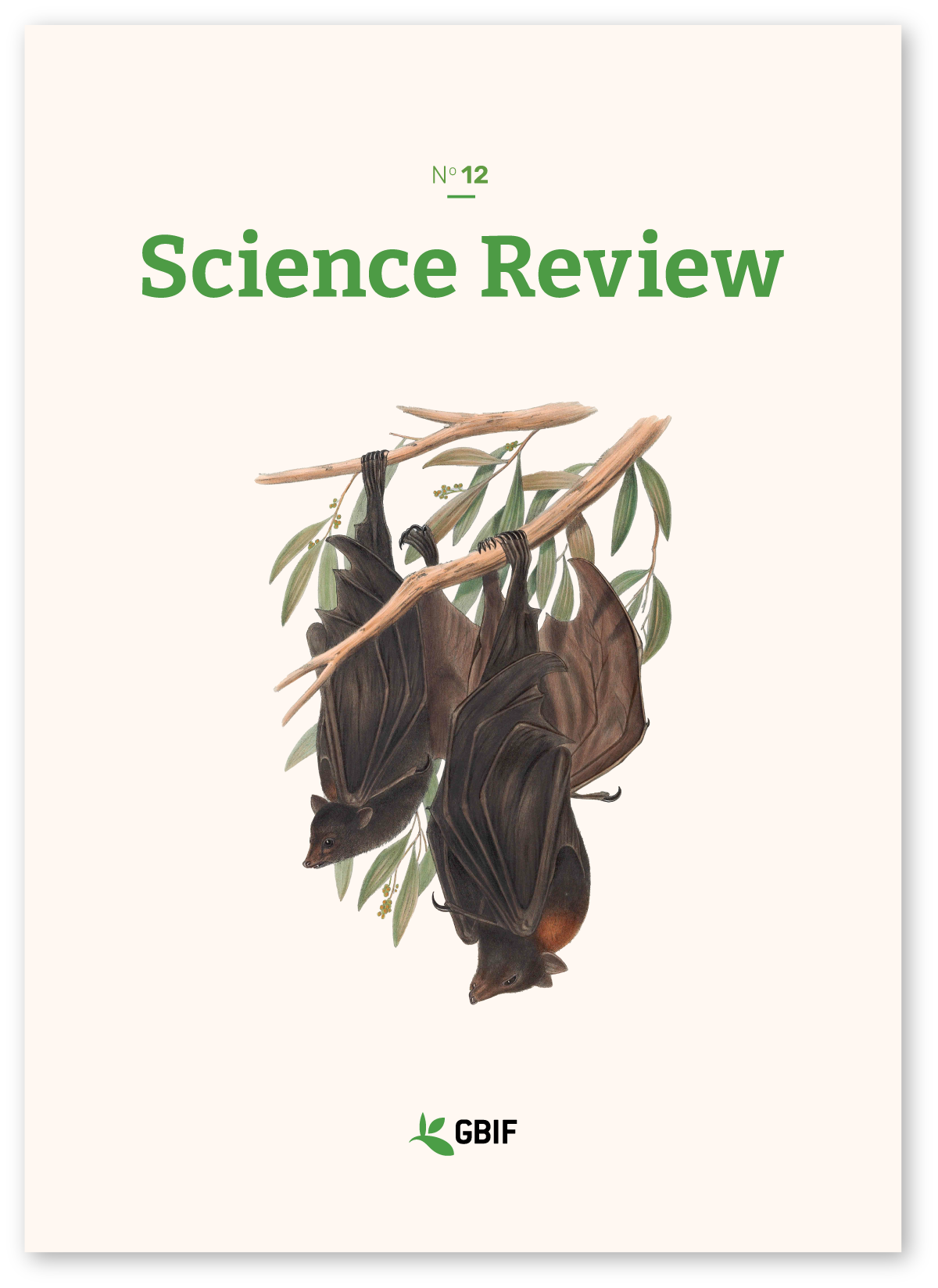Science Review

The GBIF Science Review provides an annual snapshot of key research uses drawn from the Secretariat’s literature tracking programme. The peer-reviewed articles summarized in Review offer a partial but instructive view of the wide range of research investigations that are enhanced and supported by free and open access to biodiversity data from the GBIF network of Participants, nodes and publishers.
Science Review latest issues

Science Review No. 12
Use of GBIF-mediated data in science continues to grow across both disciplines and geography. In the first three months of 2025, we logged an increase of 27 per cent in papers using data compared to the year before. In this Review, we are excited to share with you summaries of 50 studies that all make use of GBIF-mediated data in reaching their conclusions. Covering a wealth of topics, the selection of papers represents only a small fraction of the more than six papers discovered every single day of the year.
While the global COVID pandemic and subsequent lockdowns may seem like a past chapter for many, the One Health approach—with integrated research into animal and human diseases, their sources and vectors—remains more relevant than ever. Our feature section this year highlights 12 human health studies covering topics ranging from mercury poisoning from illegal gold mining—over
zoonotic mpox and schistosomiasis—to a clinical study on inflammatory bowel disease.

Science Review No. 11
This compendium again offers a glimpse of the depth and extent of scientific research that the GBIF network supports every day. In 2023, the authors who rely on GBIF published an average of 34 peer-reviewed, GBIF-enabled papers each week. That rate makes it impossible for a curated selection of 50 summaries to be more than a fraction of the work, but we hope that together they highlight some of the most important, innovative and insightful articles from recent months.
So if the exercise of reading Science Review No.11 is taking parts to stand in for the whole, the same applies to the feature section that concludes the issue. GBIF-enabled research on the topic of climate change is never simply about biodiversity; instead, these papers reveal the range of researchers’ efforts to understand and reveal the complex and dynamic interplay between climate change and biodiversity.

Science Review No. 10
Inside this compendium, you’ll find new selection of 50 summaries of recent GBIF-enabled research. With almost five peer-reviewed papers published every day whose findings are based on data from the GBIF network, both you and our communications team has a wider range of examples to review and explore than ever.
Science Review No.10 also includes a feature section on research into invasive alien species (IAS), long one of the most frequent use cases for GBIF-mediated data. Watch this space, as they say: with the release of the latest IPBES thematic assessment on IAS this year, the GBIF community—including a new task group on invasives—will coordinate work to fill the data gaps it has identified.

Science Review 2021
Enclosed you’ll find summaries for 53 peer-reviewed articles published in 2020 that made substantive use of data from the GBIF network. These cross-disciplinary exemplars are only a fraction of the year’s nearly 1,000 such papers. Together they represent “the promising directions” highlighted by GBIF governing board chair Tanya Abrahamse in February 2021, upon publication of Mason Heberling’s review in the Proceedings of the National Academy of Sciences analysing more than 4,000 GBIF-enabled peer-reviewed articles.
The Science Review also introduces a feature section, this time focused on marine research, which cuts across several topics while highlighting our partnership with OBIS, the Ocean Biodiversity Information System. As always, we encourage you to visit GBIF.org, where you can keep track of the latest finds from our literature tracking programme.
Science Review 2012-2018
NOTE: The sequence below represents the complete set, as we adjusted how we assign dates in 2016. Each year's issue now includes summaries from the previous year's GBIF-powered research.









